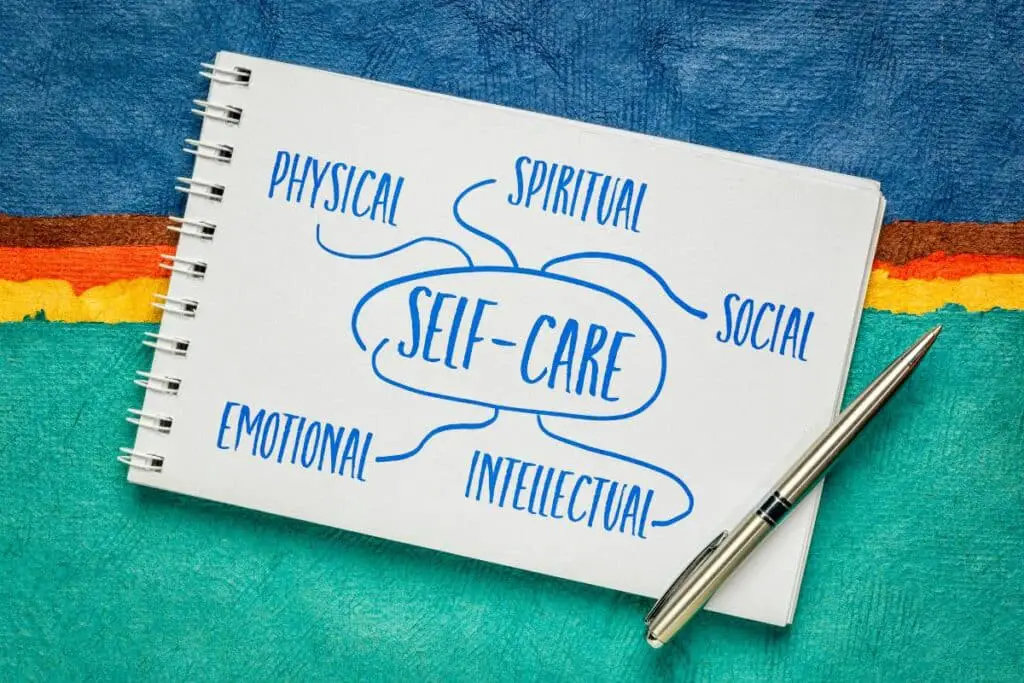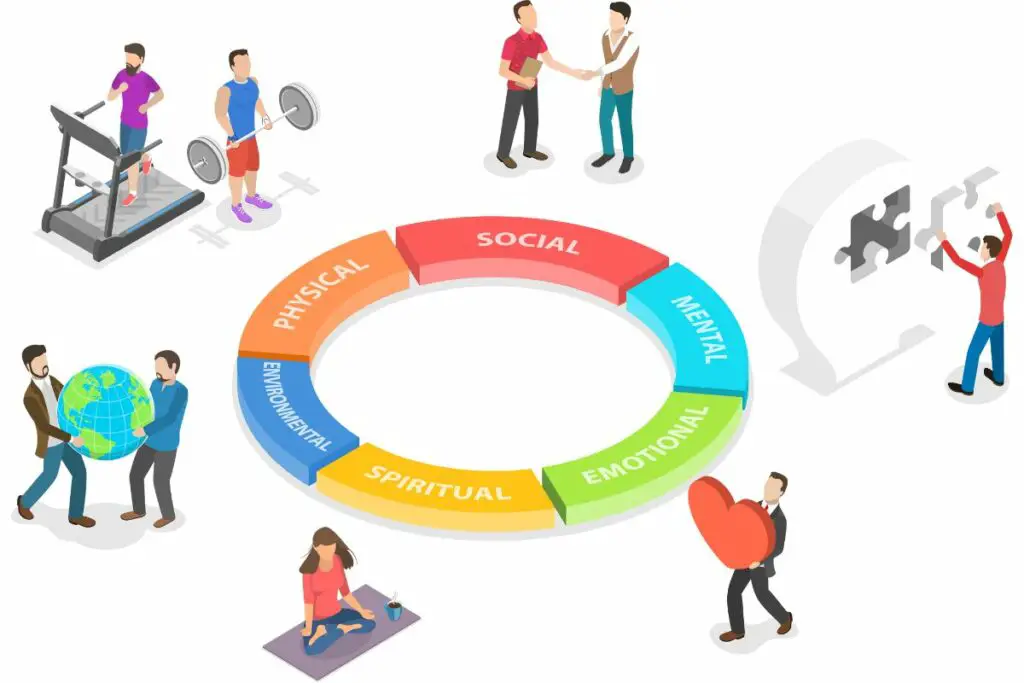Delve deep into the evolution of wellness practices. Discover the profound influence of culture on personal well-being, as we explore how diverse societal norms impact our mental, physical, and emotional wellness.
Are you ready to improve personal wellness and unlock the secrets to your most vibrant life? Have you ever wondered why hitting the gym and watching your diet doesn’t automatically translate into a healthy and balanced life?
Today, I’ll be explaining the evolution, definition, and dimensions of wellness.
But before we dive in, what’s your personal definition of wellness? Is it simply being free from illness, or does it encompass a broader sense of fulfillment?
Have you ever found yourself pouring all your energy into work, neglecting other vital aspects of your life?
By the end of this article, you’ll understand why focusing intensely on one area can be detrimental to your entire well-being.
You’ll gain valuable insights into redefining wellness and learn practical strategies for achieving a holistic and fulfilling life.
Are you ready to take the first step towards a more balanced and resilient version of yourself?
Well let’s get started.
What comes to mind when you think about wellness?
Most of us will consider our physical health right? Aspects like our weight, nutrition and exercise routine may come to mind. But wellness is so, so much more than this.
And the reason why many of us are not achieving optimal wellness is not because we lack the desire or intention; rather, it’s often due to our narrow focus on physical health alone.
I’m not saying that physical health is not important.
It most definitely is. But it’s only one of the many dimensions of personal wellness.
Now let’s take a closer look at the evolution of wellness.
The Evolution of Personal Wellness
The evolution of wellness is a fascinating journey that spans centuries and cultures.
The concept of wellness can be traced back to ancient civilizations, including Greece, Rome, and China, where it was viewed as a state of balance among the mind, body, and spirit.
In these cultures, wellness was intricately connected to a harmonious relationship between an individual and their environment.
Fast forward to the 1950s, a pivotal era in the evolution of wellness in the United States.
Dr. Halbert L. Dunn, a physician and researcher, is credited with popularizing the term “wellness” and introducing it as a proactive approach to health.
You need to understand that during this time, wellness was primarily defined as the absence of disease or illness.
However, as the societal perspectives on health and well-being evolved, so did the definition of wellness.
Although there is no single definition that is universally accepted. The concept of wellness expanded beyond mere physical health to encompass a more holistic view that involves multiple dimensions.
The evolution continued with a shift towards recognizing wellness as a dynamic and ongoing process.
Rather than simply avoiding illness, the focus turned to making conscious choices and adopting positive behaviors that contribute to a healthy and fulfilling life.

So what exactly are these dimensions of wellness?
The Dimensions of Personal Wellness
Actually, the number of dimensions of wellness can vary depending on the model or framework being used.
However, the most commonly recognized model includes six dimensions of wellness. These include Physical, emotional, social, intellectual, spiritual, and occupational dimensions of wellness.
But some models may include additional dimensions, such as environmental wellness, financial wellness, or cultural wellness.
The key is to understand that these models aim to provide a holistic perspective on well-being, recognizing that wellness is multifaceted and includes various aspects of life.
Let’s take a closer look at the dimensions of wellness
(1) Physical Wellness
I’m sure we’d all agree that physical wellness includes maintaining a healthy body weight, consuming a balanced diet, engaging in regular exercise, and getting adequate sleep.
However, physical wellness also involves avoiding unhealthy habits such as smoking, excessive alcohol consumption, and drug abuse.
(2) Emotional Wellness
Emotional wellness is the ability to recognize and manage your emotions in a healthy way. How are you coping with stress?
Are you able to maintain positive relationships? Can you express emotions in a constructive manner? Do you have a positive self-image and a sense of purpose in life?
(3) Social Wellness
Social wellness is the ability to form and maintain positive relationships with others.
It includes the ability to communicate effectively, develop meaningful connections, and contribute to your community. It involves respecting and valuing diversity and maintaining healthy boundaries in relationships.
(4) Intellectual Wellness
Intellectual wellness is the ability to engage in lifelong learning and personal growth. Are you able to think critically, to solve problems, and to make informed decisions?
Do you pursue your interests and hobbies? Do you explore new ideas and expand your knowledge and skills?
(5) Spiritual Wellness
Spiritual wellness is the ability to find meaning and purpose in life.
It includes the ability to connect with something greater than yourself, whether it be nature, a higher power, or a sense of inner peace.
Spiritual wellness also involves practicing gratitude, forgiveness, and compassion towards oneself and others.

(6) Occupational Wellness
Centers on finding satisfaction and fulfillment in your work, aligning your career with your passions, and achieving a healthy work-life balance.
Read also: How To Create A Personal Wellness Plan – Solutions With Rush
Key takeaway based on the dimensions of personal wellness
Each dimension is interconnected and contributes to your overall well-being.
Now, I’ve got some good news and some bad news.
Here’s the bad news? Ignoring or neglecting any single dimension over an extended period can have detrimental effects on the others.
It’s like a delicate ecosystem where every aspect plays a pivotal role, and imbalance in one area can create a ripple effect across the entire system.
Wondering what the good news is? Well the good news is that these dimensions do not need to be equally balanced. There’s no need to invest the same amount of time in each dimension.
This flexibility allows ample space for your individuality, aspirations, and priorities. Instead of striving for uniformity, aim for harmony.
Consider this scenario to improve personal wellness:
If you pour all your energy into improving your occupational wellness—finding fulfillment in your work, achieving career goals, and improving your financial situation — that’s fantastic.
However, solely focusing on this dimension, especially for an extended period, while neglecting others, such as physical or emotional wellness, will eventually lead to an imbalance that impacts your overall well-being.
In my own journey, I learned this lesson the hard way. Being somewhat of a workaholic, I poured most of my energy into my professional life, neglecting crucial aspects like physical and emotional wellness. Initially, the impact wasn’t apparent, and the achievements in my career seemed to overshadow any imbalance.
However, as time passed, the consequences became undeniable. The stress accumulated, affecting not only my personal life but also seeping into my work.
The clarity and productivity I once prided myself on began to wane, and my tolerance for challenges diminished.
It became evident that a singular focus on occupational wellness, to the detriment of other dimensions, hindered my overall well-being.
For us to show up as our best selves, both personally and professionally, we need a comprehensive and balanced approach to wellness. This means recognizing when one dimension requires more attention. But it also means being proactive in maintaining or creating equilibrium.
If you’re feeling lost and uncertain about how to improve your personal wellness? You’re not alone. Millions of people feel this way, which is why I’ve created the ‘En Route to Wellness’ Guide and Workbook.
This guide provides simple, step-by-step instructions that will help you find your way to a healthier life.
You’ll learn how to identify the source of your health issues, overcome the belief that you’re not ready for change, find the motivation to keep going even when it gets tough and so much more.
Plus, I’ve included a bonus section on how to create healthy habits that stick. Grab the free guide and kickstart your wellness journey.

Now, let’s talk a bit about cultural influences.
How does culture influence personal wellness?
Cultural influences can also play a significant role in your ability to achieve optimal wellness. Here’s why I say this.
Different cultures have varying beliefs and values regarding health and wellness, which can impact your perception and approach to wellness.
Can you recall a specific instance where your cultural background has influenced your personal wellness, whether in a positive or negative way? Let me know in the comments.
In these cultures, there could be an ingrained belief that acknowledging mental health struggles reflects weakness or a lack of resilience, contributing to the reluctance of individuals to seek help or share their emotional challenges.
This stigma may further be fueled by cultural norms that prioritize collective well-being over individual mental health.
Expressing vulnerability or seeking professional assistance might be perceived as a deviation from societal expectations, making it challenging for individuals to openly discuss their emotional well-being.
As a consequence, individuals in these cultures might grapple with their mental health concerns in silence, avoiding seeking the necessary support or interventions.
This cultural dynamic underscores the importance of cultural sensitivity in promoting mental health awareness and encouraging open conversations about emotional well-being, thereby dismantling the stigma associated with seeking help.
So if you have that cultural background you might hesitate to seek professional help. You may even avoid sharing your emotional struggles with others due to the social consequences or fear of judgment.
This cultural stigma can significantly impact your ability to address and manage your emotional well-being.
Another example is our cultural norms regarding food and physical activity. For instance, in some cultures, certain types of food may hold great cultural significance, even if they are not particularly nutritious.
We’re focused more on the taste and appearance of food – rather than the nutritional value.
In Western cultures, fast-food and processed snacks have become ingrained in daily dietary habits.
The convenience and widespread availability of these options, coupled with busy lifestyles, can contribute to a diet high in saturated fats and sugars, affecting overall physical wellness.
I want to take a moment to emphasize that promoting healthier alternatives doesn’t necessarily mean that we need to abandon cultural traditions.
Instead, it’s about finding a balance that respects the richness and diversity of our cultural heritage while making informed choices that contribute to our overall well-being.
Traditional beliefs about body image and exercise significantly influence how we engage in physical activity.
In certain cultures, a slim or slender body type is often associated with ideals of beauty and self-discipline.
These cultural norms contribute to societal expectations, creating pressures that could drive some persons to pursue extreme measures to achieve or maintain a very slim physique.
Conversely, in other cultures, a more robust or curvier body shape is celebrated as a symbol of health, prosperity, or attractiveness. In these societies, being a bit overweight may be considered normal or inconsequential.
Because of these views, you might be less willing to engage in physical exercise. Misconception and societal norms may cause persons who are very slim to be ridiculed for going to the gym.
Understanding these cultural variations is essential for promoting a balanced and inclusive approach to wellness. It calls for recognizing that diverse cultural beliefs contribute to distinct ideals of beauty and health.
How much time should you spend on each dimension of wellness?
The amount of time you should spend on each dimension of wellness could vary based on your individual needs, priorities, and circumstances. Since everyone’s life is different, there’s no one-size-fits-all answer. Instead of rigid time allocations, remember to aim for balance and harmony.
Here are a few general tips to guide you:

(1) Listen to Your Body and Mind to Improve Personal Wellness
Imagine waking up feeling tired, stressed, and irritable. Your body might be telling you it needs more sleep or relaxation.
You may start getting headaches or feel more irritable. Paying attention to these signals allows you to adjust your routine.
If your mind feels overwhelmed from too much work or study, it’s a cue to take a mental break, indulge in a hobby, or connect with loved ones. Don’t ignore the signals you receive from your body and mind.
(2) Prioritize Based on Needs to Improve Personal Wellness
Let’s say your work demands have skyrocketed, leaving you physically exhausted. You may not have enough time to go to the gym or rest as much as you like. It’s still imperative that we look for small opportunities to focus on other dimensions of wellness.
So maybe, prioritizing physical wellness could involve scheduling short breaks, incorporating quick exercises, or focusing on a balanced diet to recharge your body.
Adjusting your priorities based on your current needs allows you to address immediate concerns without becoming overwhelmed.
(3) Flexibility and Adaptability to Improve Personal Wellness
Imagine you’ve planned a rigorous workout routine for the week, but suddenly a family event pops up.
Being flexible allows you to adapt your schedule, perhaps opting for shorter, more intense workouts or finding creative ways to stay active.
Life is full of surprises, and being adaptable ensures you can maintain your well-being even when unexpected events occur.
(4) Set Realistic Goals to Improve Personal Wellness
Suppose you’ve decided to improve your emotional wellness by incorporating mindfulness into your daily routine. Instead of aiming for an hour of meditation each day, start with a realistic goal, like 10 minutes.
Setting achievable milestones allows you to make steady progress and build habits that contribute to your overall well-being.
(5) Quality Over Quantity to Improve Personal Wellness
Consider someone aiming to enhance their intellectual wellness through reading. Instead of rushing through numerous books, focus on a few that genuinely interest you.
Engaging deeply with meaningful content contributes more to your intellectual well-being than merely trying to consume a large quantity of information. It’s about the quality of your engagement rather than the quantity.
Read also: The Dimensions & Importance Of Personal Wellness – Solutions With Rush
Final words on how to improve your personal wellness
Remember, wellness is a holistic concept, and the goal is to create a harmonious blend of dimensions that works for you.
Regular self-reflection and adjustments to your routine can help ensure that you are nurturing all aspects of your well-being.
If needed, seeking guidance from a healthcare professional or wellness expert can provide personalized advice based on your unique circumstances.
References
Stoewen DL. Dimensions of wellness: Change your habits, change your life. Can Vet J. 2017 Aug;58(8):861-862. PMID: 28761196; PMCID: PMC5508938.
Bart R, Ishak WW, Ganjian S, Jaffer KY, Abdelmesseh M, Hanna S, Gohar Y, Azar G, Vanle B, Dang J, Danovitch I. The Assessment and Measurement of Wellness in the Clinical Medical Setting: A Systematic Review. Innov Clin Neurosci. 2018 Oct 1;15(9-10):14-23.








